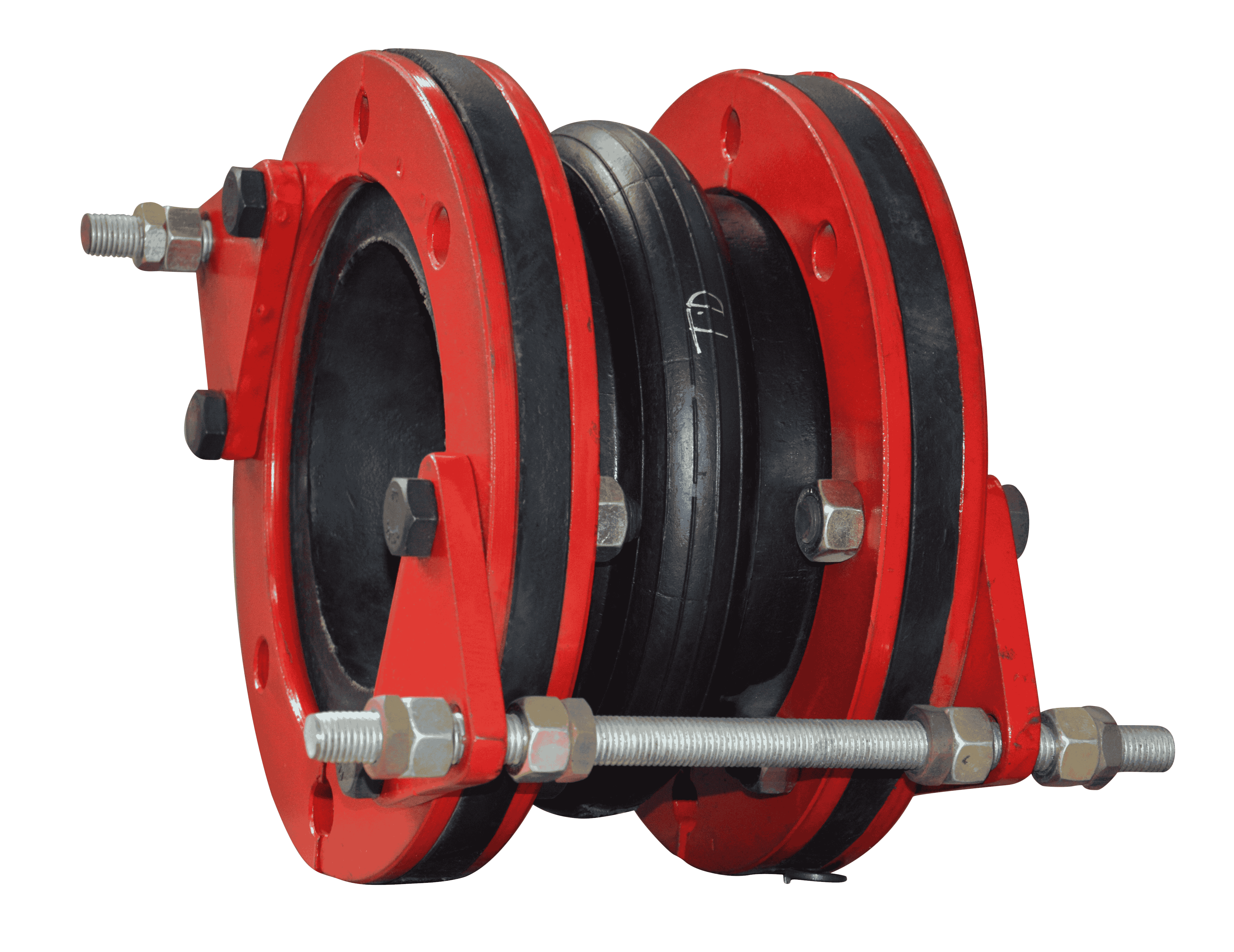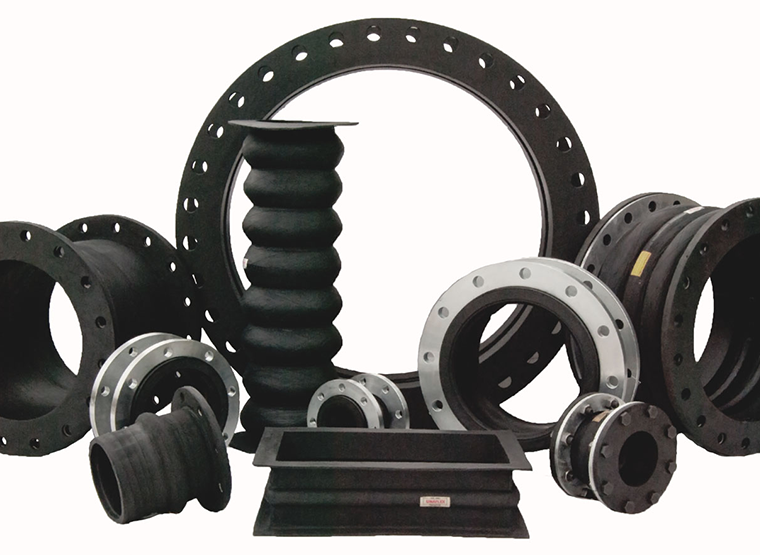Rubber expansion joints are widely used in most industrial plants. These expansion joints are made from natural or synthetic elastomers and are crucial components used as flexible connectors in which unique fabrics are embedded to provide physical reinforcement.
Silicone expansion joints are a type of rubber expansion joint made from silicone rubber, known for its high resistance to extreme temperatures, weathering, and chemical exposure. These flexible rubber expansion joints ensure that pipes remain intact and functioning under pressure.

What Are Rubber Expansion Joints?
Rubber expansion joints are flexible connectors that absorb various systems’ vibrations, movements, and noise. These expansion joints are used in all systems that transport fluids, slurries or gases under pressure at varied temperatures. These expansion joints are installed in air and gas duct systems in all power plants, gas turbine systems, diesel engine installations, petrochemical and chemical plants, pump systems, cement works etc.
What Are The Different Kinds Of Rubber Expansion Joints?
There are many different types of flexible rubber expansion joints used for serving varied applications. Some of the common types of rubber expansion joints are as follows:
• Single Unrestrained
• Universal Expansion Joint
• Single Tied Expansion Joint
• Tied Universal Expansion Joint
• Pressure-Balanced Elbow Expansion Joint
• Gimbal Expansion Joint
• Hinged Expansion Joint
• In-Line Pressure
• Balanced Expansion Joint
What Are The Benefits Of Rubber Expansion Joints?
Rubber expansion joints are primarily used for absorbing vibrations and shock waves and relieving stress in ductwork. These expansion joints are used in various industries such as HVAC, Petrochemical, chemical and automobile industries.
• Compensate for pipe misalignment
• Absorb vibration and shock
• Prevent damage from seismic activity
• Prevent damage from pressure surges
• Accommodate pressure loads
• Reduce noise
• Isolate vibration
• Neutralize axial, lateral, angular stresses
• Prolong life of motive equipment
• Relieve stress of on equipment flanges
What Are The Common Applications Of Rubber Expansion Joints?
HVAC Systems
Rubber expansion joints are used in HVAC systems installed in commercial and industrial buildings, hotels, apartments, schools, and shopping plazas. They help to prevent stress on pipes and fittings, reduce noise levels, accommodate misalignments and help ensure longevity of HVAC system.
Piping Systems
Rubber expansion joints are used in piping systems to absorb vibrations, movements, and noise. They are flexible connectors that can help prevent damage to pipes and equipment. They can prolong the service life of pipe work and connected equipment.
Concrete Structures
Rubber expansion joints are used in concrete structures to absorb vibrations and movement and maintain stability and strength. These tools are used in swimming pool decks, curb and gutter work, floor slabs, pavement patch repair, sidewalks, driveways, plazas, parking decks, highways, and airport runways.
Other Applications
Rubber expansion joints can also be used in bridges, railway tracks, ships, and other structures.
What Information Is Required To Design Rubber Expansion Joints?
• Nominal diameter / Connection – the diameter of the connection
• Pressure – working/design pressure
• Medium – the medium through which the connector will pass
• Temperature –The working and design temperature
• Needed movement – the amount of movement required
• Flow rate / flow speed – the speed and rate of flow
• Application the objective of the expansion joint
• Location –the location where the joint will be installed
• Set down depth – how deep the joint will set into the ground
• Floor finish – The type of finish that will be installed above the joint
• Cover plate material usage – The material that will be used for cover plate
• Traffic usage –how much traffic the joint will require to support

Things To Consider For Choosing Rubber Expansion Joints
When it comes to installing rubber expansion joints, one must carefully consider the compatibility of the expansion joint. Here are some things to consider for choosing rubber expansion joints:
• Application: It is important to have deep understanding of the application. One must consider what material or fluid will pass through the joint, what temperature, pressure and movement range will be experienced by it
• Size: The dimension of the expansion joint must match the flange sizes of the pipes it connects
• Compatibility: The joint should be compatible with the piping material to prevent chemical degradation
• Alignment: The joint should be precisely aligned to avoid undue stress and premature failure
• Maintenance: Regular inspection and maintenance can extend the joint’s service life
• Pressure: An expansion joint should be able to withstand the pressure without risking the operators or the media flowing through it
• Movement: The joint should be able to absorb axial, lateral, and angular movements
• External conditions: The joint should be able to withstand UV radiation and mechanical damage
• Connection type: The joint should be able to connect to the pipes using a fixed flange, rotating flange, threaded connection, or well-in solution
How Long Do Rubber Expansion Joints Last?
The design, application, and proper installation are necessary to ensure the durability of a rubber expansion joint. When properly designed and installed, an expansion joint lasts for 15 to 20 years in most industrial applications. It is also recommended to perform regular maintenance and care to preserve the integrity of the expansion joint.
Summary
Rubber expansion joints are flexible connectors used in various systems to absorb vibrations, thermal energy and noise. These expansion joints are used in many industrial and energy plants, as well as in piping systems. It is worth to look for reputed manufacturers’ specializing in providing tailored solutions to meet your specific needs.



